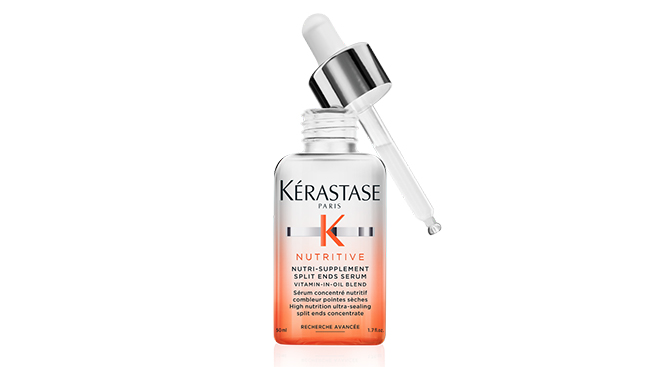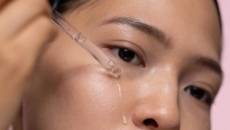In the quest for beautiful, manageable hair there’s a wide range of products that can help to achieve that goal. The function of a shampoo, conditioner and a styling lotion or mouse are straight forward but other offerings in the haircare market aren’t readily obvious. And even when their intended use is made clear, it’s can be confusing to decide which ones really will make a difference because, really, how many products should we need to have great looking hair? We asked haircare experts to explain what these various formulations are and how they’re meant to enhance our hair.
Co-wash

“A co-wash is the common term for conditioner shampoo” says Marilisa Sears, artistic director for Marc Anthony Hair Care and MAV Beauty Brands. “It is a gentle way to wash your hair when it needs to be refreshed. Much of the damage from shampooing is caused by friction, but incorporating gentle cleansing elements can help, which is what a co-wash does.” She advises massaging it in rather than scrubbing the scalp and hair to avoid damage caused by friction.
Bea Carmichael, global educator styling for Aveda describes co-wash as gently cleansing your hair and scalp with a sulfate-free conditioning wash. “Unlike shampooing alone, the hair is more conditioned usually maintaining a healthy balance of hydration in the scalp and hair, some can soothe dry, flaky, or irritated scalps. A co-wash is very different to a shampoo as most co-washes moisturize and hydrate curls and coils while taming frizz.”
Sears concurs that a co-wash is beneficial for curly hair which can often be dry.
Serums

Hair serum, just like those for skincare, are concentrated treatments that can be layered into your haircare routine. There are daytime ones applied more to the lengths of the hair and nighttime ones usually applied to the scalp. Anne-Marie DeGrandpre, Kérastase's marketing manager, says that as the scalp is skin, it should be cared for as such. She says that just like our skin, our cells regenerate at night and night serum will work the same way by providing hydration, nutrients, repair ingredients on the hair and the scalp.
“The best way to use our day serums is on damp hair,” advises DeGrandpre. “So right after the shower, you’ve done your scrub, conditioner or mask. You’re out of the shower and your hair is damp. You’re going to use your scalp and length serum. Then you can blow dry your hair.”
Carmichael says daytime serums are there to primarily add sheen or shine to the hair, but some formulations can tame frizz, hydrate, strengthen and even reduce the appearance of split ends.
Serums versus Masks

Our hair benefits from using both types of treatments which are complementary. Think in terms of a skincare regimen: use a serum during the day and then use a mask at night when you wash your hair. Masks, which provide extra moisture, should replace your conditioner once or twice a week and are rinsed out just like a conditioner. Serums, though, are more potent and concentrated treatments, says DeGrandpre, and remain on the hair longer than a mask.
Glosses

“Gloss products are built to coat the cuticle for reflective shine that should last over a period of weeks,” says Sears. Although there are tinted options to enhance your hair colour, most glosses are clear. For Carmichael, to achieve the most benefits from a gloss product, she advises having a salon treatment rather than a using a self-applied product at home. “Well, if you want a glossing treatment to stay in your hair for a period, even up to 24 washes, these are only found in salon,” she explains. “They are applied like a tint, and sometimes these can also have tone added to them to reduce unwanted warmth or to add warm to the hair. Salon performance products have advanced technology that not only work to add gloss and shine, but that can strengthen the hair from within.”
If you do a gloss at home, DeGrandpre says it could replace a mask or conditioner. It’s applied in the shower on damp hair after which you would applied your serum and styling products to dry your hair.
Bond Repair

Bond products are for strengthening brittle damaged hair, says Carmichael who suggests choosing a naturally derived bond building product to rebuild and strengthen the hair from the inside out. “These work by reducing breakage in the hair and can strengthen even the weakest most fragile hair,” she says. “It’s important to do your research when choosing these products; look for clinical testing claims and ingredients.” Those who colour their hair, especially if it’s lightened, could benefit from a bond repair product and also if you heat style. The more stress you put on your hair, the more it needs to have the bonds strengthened and protected.
Sears also advises doing research before buying a bond product. “Though they are all the rage, it’s important to separate the language from the results. It is easy for a product to claim it is ‘bond repair’ because the hair has several types of bonds, some of which are actually meant to break and repair repeatedly. For example, hydrogen bonds break every single time you wet your hair and then ‘repair’ when the hair dries. Salt bonds break every time hair’s PH balance is off and ‘repair’ when you restore it. Disulfide bonds, however, are extremely difficult to repair and for the most part once they are broken, they remain broken. True bond repair products target disulfide bonds to repair them deep within the hair fibre.”
Primers
Primers do much what the name implies: prep the hair for styling and are formulated to protect your hair against the heat from the drying or styling tools. “They are also good at detangling hair and making it easier to comb through when wet, which is important, so your hair doesn’t break, as its most vulnerable to breakage when wet,” notes Carmichael.
Oils

A hair oil is generally used at the end of a routine to seal the serum and any other treatments that were applied to the hair. The oil restores shine, malleability and fluidity after the blow-dry and provides extra silkiness to the hair, DeGrandpre says.
“All of our oils are super lightweight,” she says. “So even the most fine, oily hair can use our oils because our oils aren’t meant to be used at the scalp. It’s only going to the ends. You only need the tiniest amount. You rub it in your hands. You apply on your lengths, and it provides a silky, shiny, non-greasy finish.”






